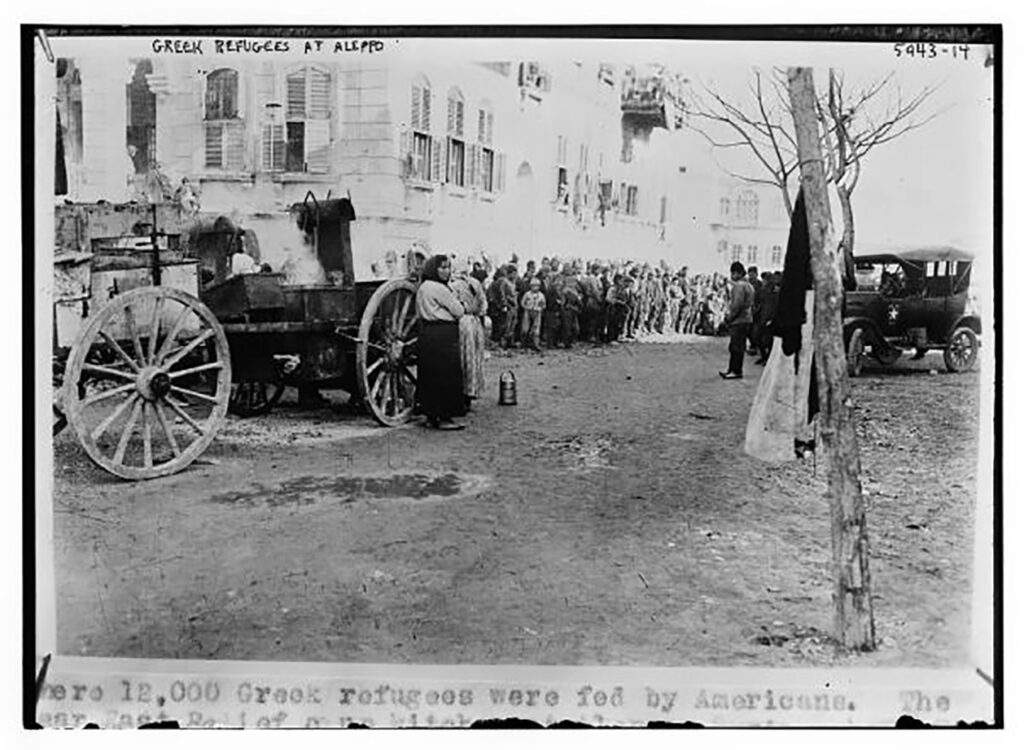Α. After the Greco-Turkish War (1919-1922) and the compulsory population exchange between Greece and Turkey in 1923, approximately 17,000 Greeks fled the “Asia Minor Catastrophe” to various cities in Syria.

IN RECENT HISTORY, GREEKS FOUND THEMSELVES REFUGEES IN SYRIA ON A NUMBER OF OCCASIONS AND ON A MASS SCALE:
B. In 1939 during Turkey’s annexation of the Sanjak of Alexandretta, approximately 12,000 Greeks fled to Damascus and Aleppo joining existing Greek communities.

Uprooted Greeks from Alexandretta flee to – under French Mandate – Syria
C. The migrant route taken today by the thousands of refugees as they make their way to the shores of Turkey and then into Greece, was used in reverse by 20,000 Greeks, mainly from the islands, in order to escape the Nazi Occupation during WWII.
Refugee camps were established in the Middle East and Africa to accommodate the tens of thousands of people from across Europe seeking refuge. The Greek refugees fled by sea to the refugee camps under arduous conditions. An inhabitant on the shores of Turkey remembers: “They tied barrels together into makeshift rafts and crossed over. There was complete pandemonium in the sea. We all ran to the shore to witness the coming of the Greeks.” Hunger, the occupying forces and the ongoing war were the main reasons which fueled the wave of migrants.

Uprooted Greeks from Alexandretta flee to – under French Mandate – Syria

Greek refugees at Aleppo (Photo: Library of Congress)

Approximately 8,000 Greek refugees from Anatolia find refuge in caves near Aleppo.

Refugees from Alexandretta, August 1939

500 Greeks return to their native islands from Moses Wells camp in the Sinai Desert where they spent three years of exile. (Credit: United Nations Archives).
MANY OF THE GREEK REFUGEES
Greek refugees who lived in a refugee camp in Moses Wells, Egypt from 1945 to 1948 reunite with family members on their island home of Samos. (Credit: United Nations Archives)



























